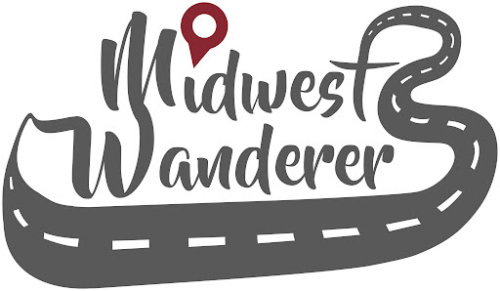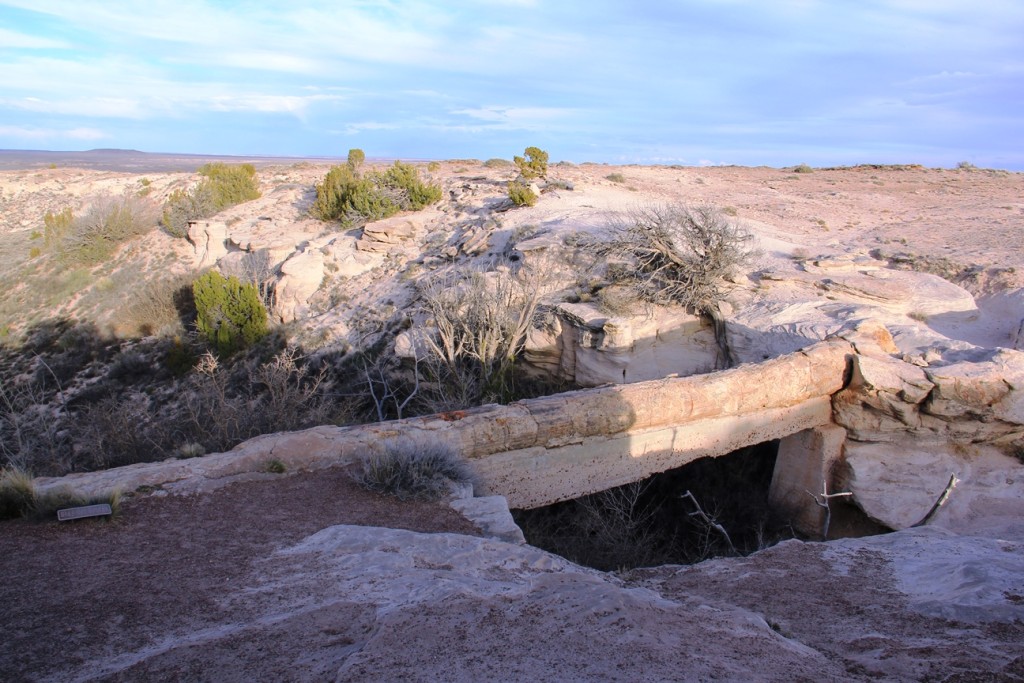Mountains painted in stripes and trees turned to crystals in a rainbow of colors sound like something from a fairytale. They are as real as can be, though, in the Painted Desert and the Petrified Forest National Park in northeast Arizona.
The Petrified Forest has always been on my bucket list. I’m not sure why, as I had no idea what to expect, but the name itself sounds intriguing. Since we drove to Arizona on our last trip west and were nearby, we made a point of taking the 28-mile road through the park.
Our first stop was the visitor center at the north end of the park, where we watched the orientation film for a brief history and overview and then wandered the souvenir gift shop where they sell—surprise—petrified wood.
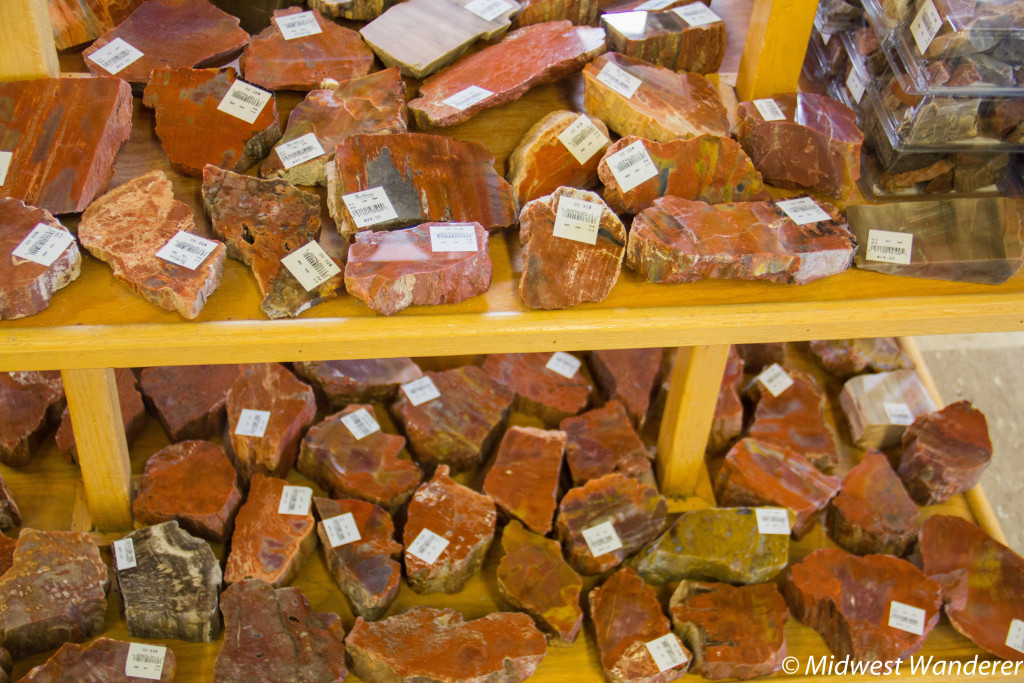 We picked up a copy of the Trip Planner (free) from the visitor center. The map is more detailed than the one in the brochure you get at the gate, and it includes helpful tips, like a guide on what to see if you have a couple of hours, a half day or a full day in the park. The Painted Desert is at the north end of the park. The formations change coloring as you progress down the road, with the Petrified Forest at the south end.
We picked up a copy of the Trip Planner (free) from the visitor center. The map is more detailed than the one in the brochure you get at the gate, and it includes helpful tips, like a guide on what to see if you have a couple of hours, a half day or a full day in the park. The Painted Desert is at the north end of the park. The formations change coloring as you progress down the road, with the Petrified Forest at the south end.
Don’t miss a Midwest Wanderer post. For a FREE subscription, enter your e-mail address in the Subscribe2 box to the right and click Subscribe.
There are many overlooks throughout the park, as well as several trails to hike. Although at first it’s tempting to stop at every overlook you come to, I suggest you stop at only one or two in each area to pace yourself, especially if you’ll be there for a half day or less. Our first stop was at the Painted Desert overlooks.
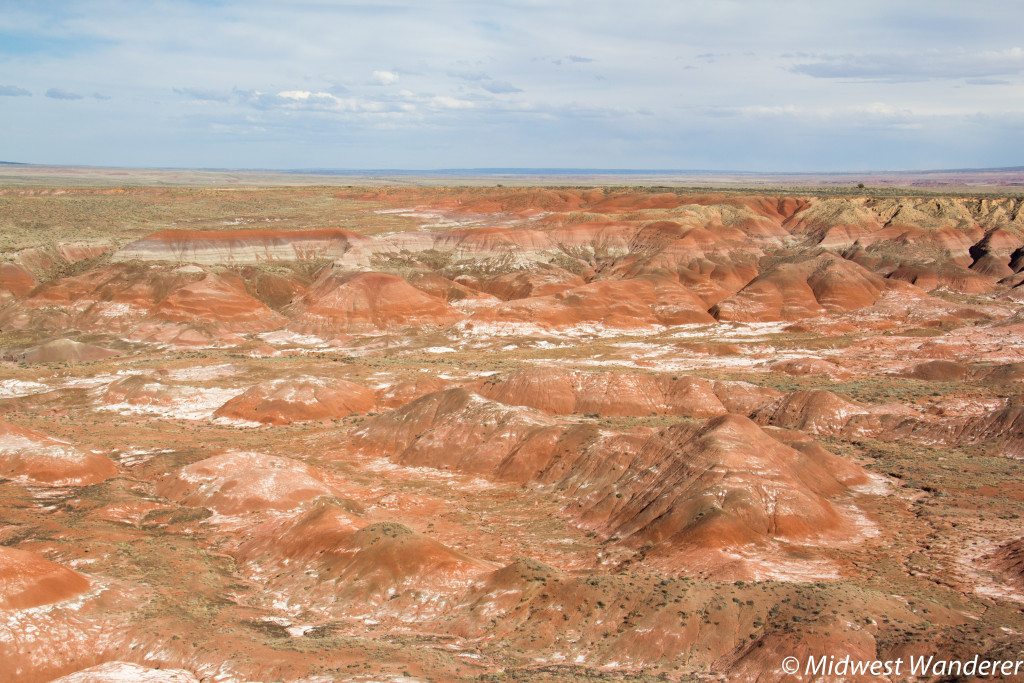 The Painted Desert Inn was built in the early 1920s of petrified wood and served as a private inn. It was rehabbed in the 1930s by the Civilian Conservation Corps. The outside was covered with stucco and the inside walls finished. Today the inn serves as a museum, with the soda fountain and paintings added during the CCC update still intact.
The Painted Desert Inn was built in the early 1920s of petrified wood and served as a private inn. It was rehabbed in the 1930s by the Civilian Conservation Corps. The outside was covered with stucco and the inside walls finished. Today the inn serves as a museum, with the soda fountain and paintings added during the CCC update still intact.
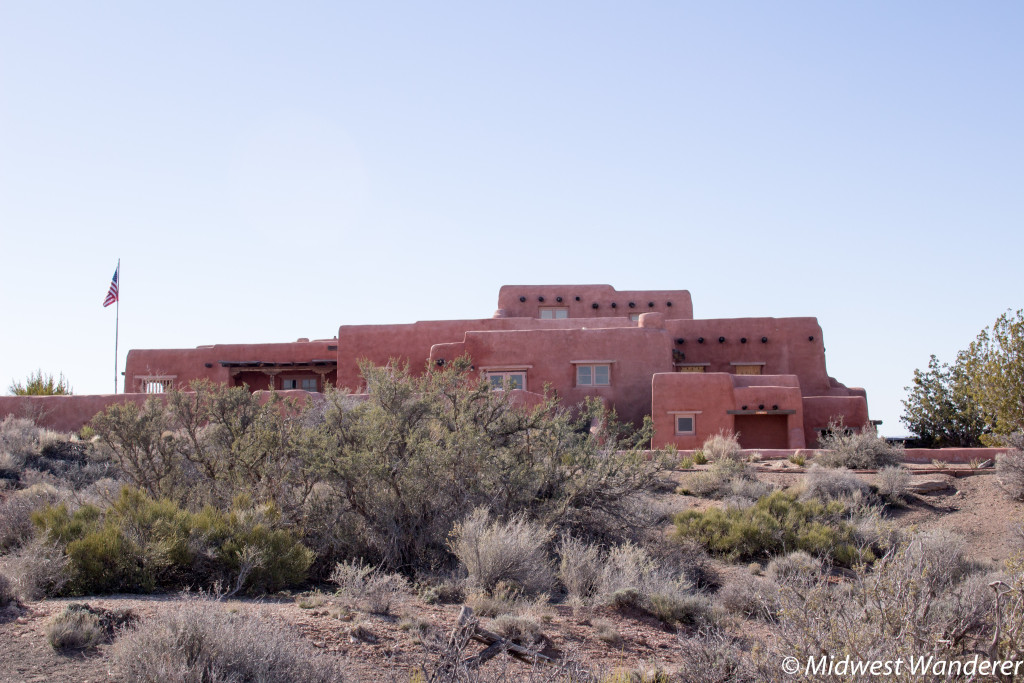

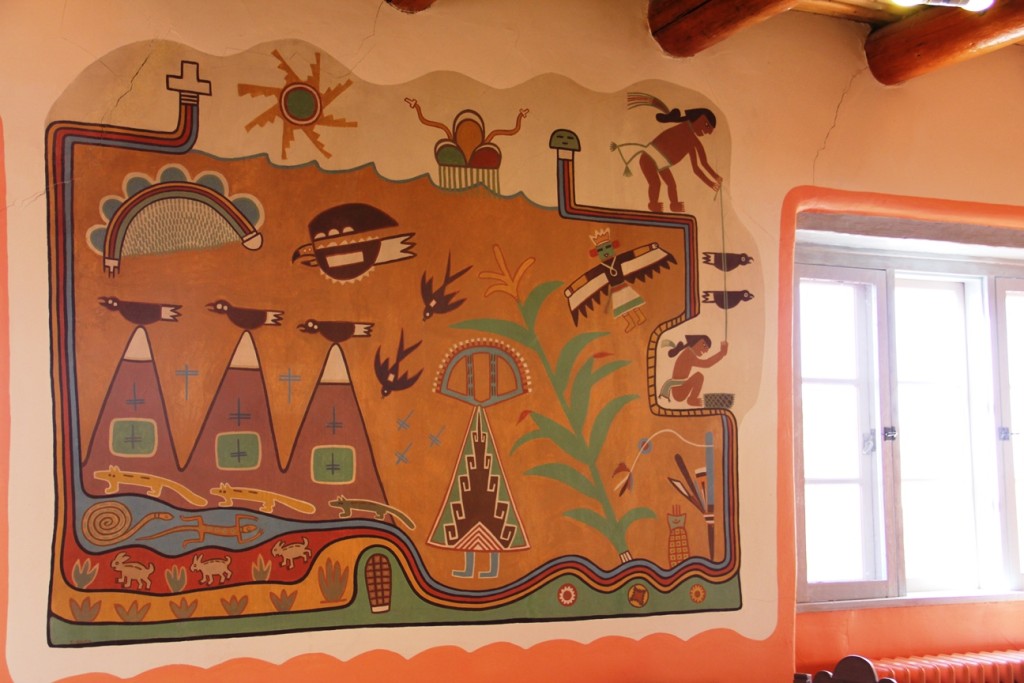 Historic Route 66 used to run through the park. A rusted 1932 Studebaker is parked where the road ran through.
Historic Route 66 used to run through the park. A rusted 1932 Studebaker is parked where the road ran through.
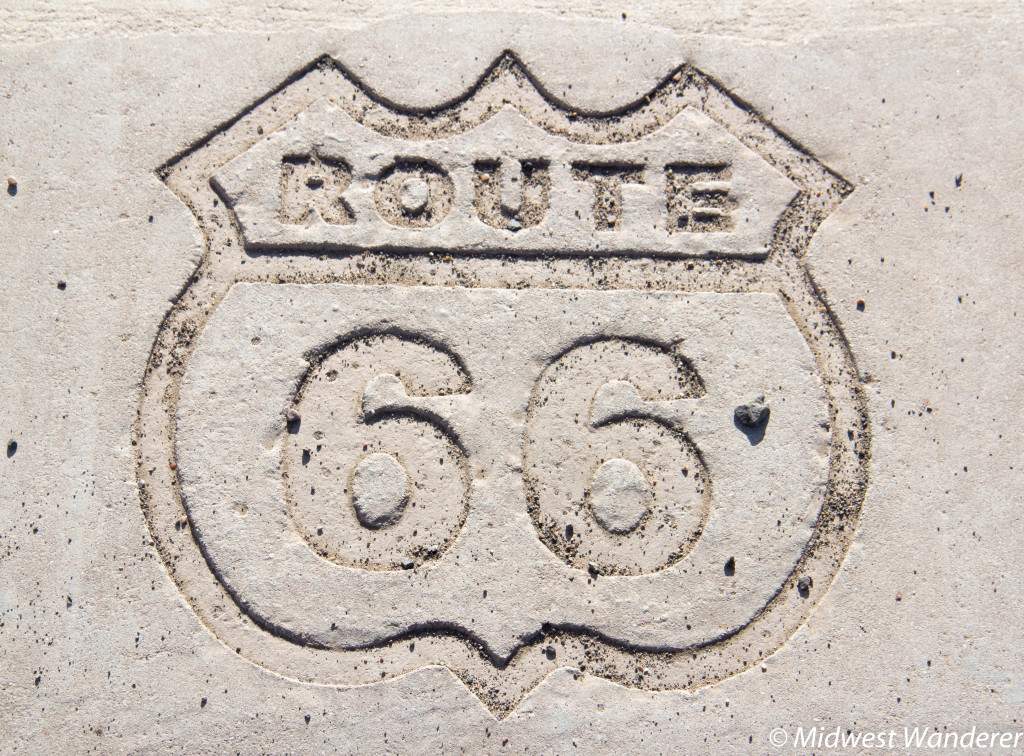
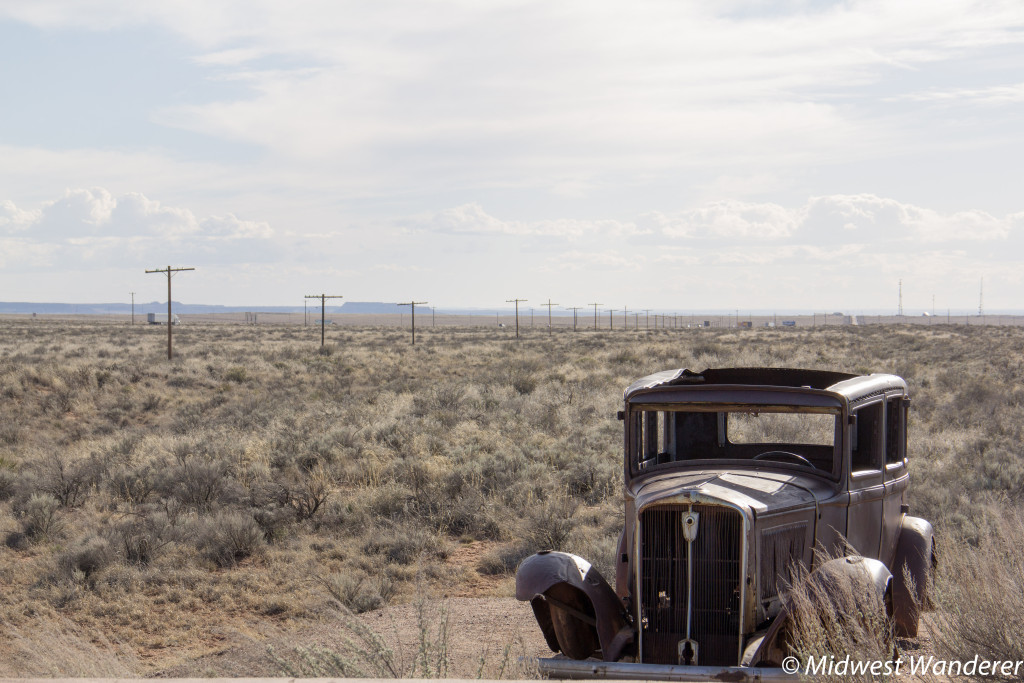 Going back much further in time, ruins of Puebloan homes and petroglyphs can be viewed along a short 0.3 mile trail.
Going back much further in time, ruins of Puebloan homes and petroglyphs can be viewed along a short 0.3 mile trail.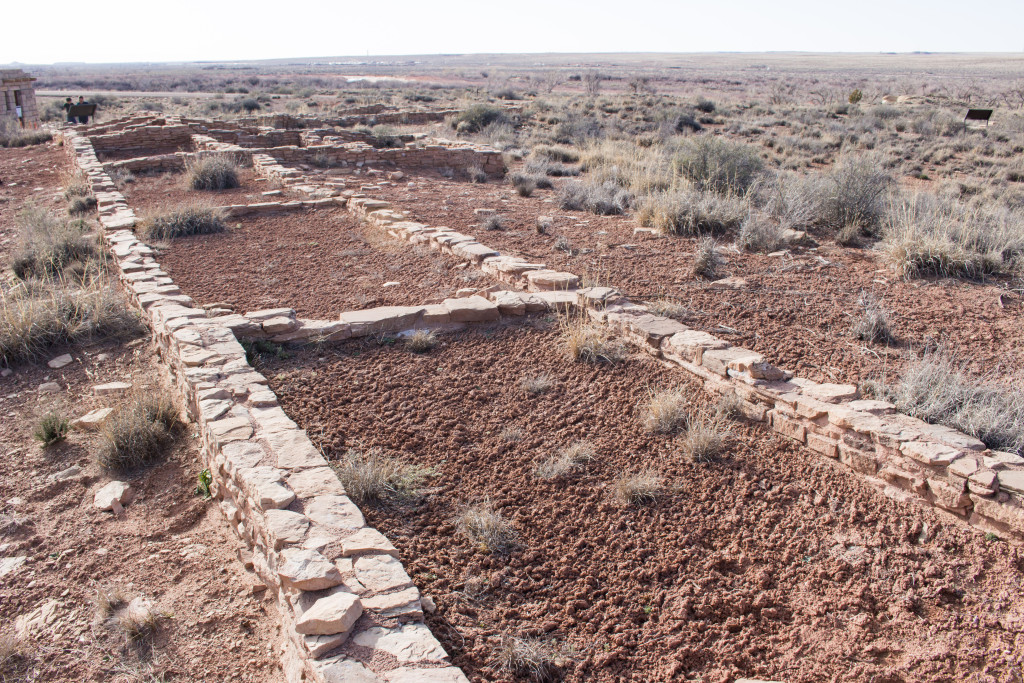 I wish we would have had time to walk the one-mile trail through the Blue Mesa area. Instead we drove the 3.5 mile loop, stopping here and there to take pictures.
I wish we would have had time to walk the one-mile trail through the Blue Mesa area. Instead we drove the 3.5 mile loop, stopping here and there to take pictures.
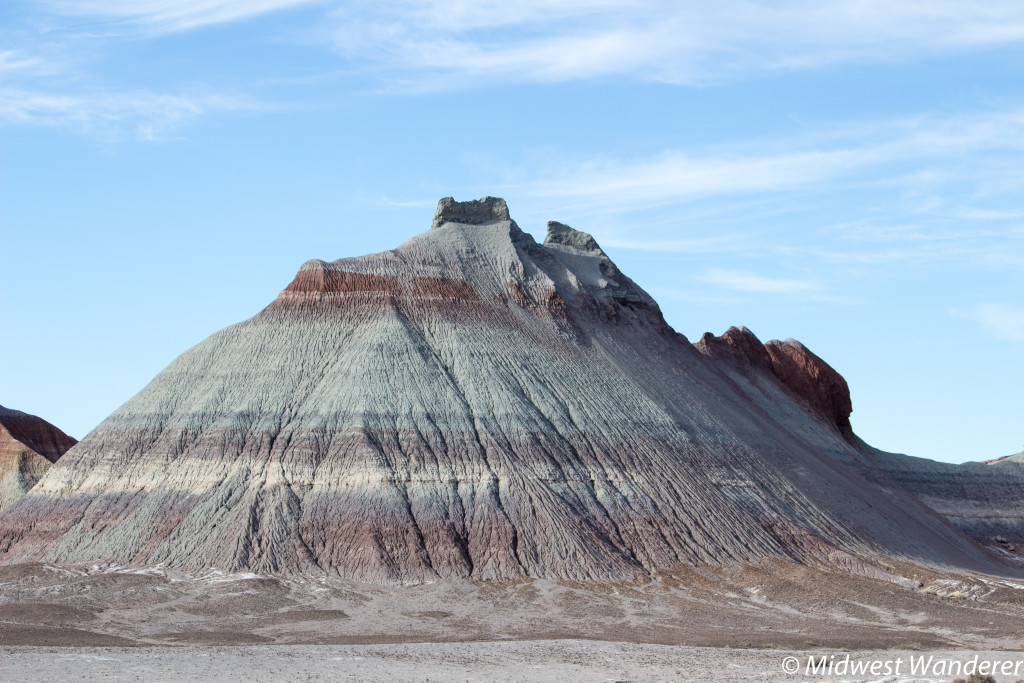
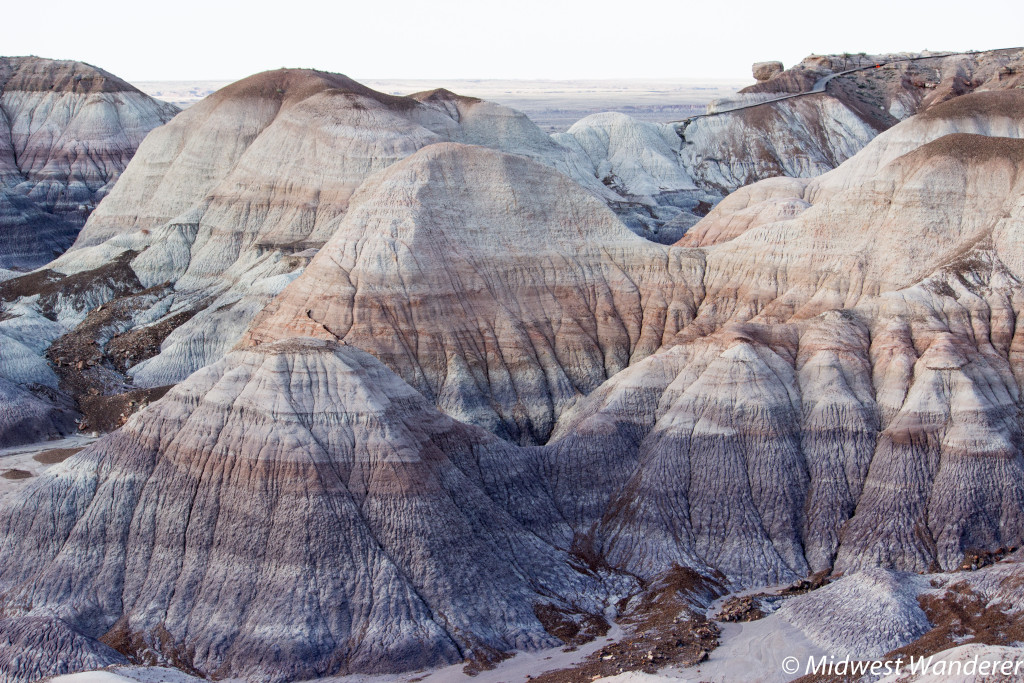 We stopped at the Agate Bridge, where a petrified log forms a bridge over a gully.
We stopped at the Agate Bridge, where a petrified log forms a bridge over a gully.
Look down into the Jasper Forest, an area with a lot of petrified wood.
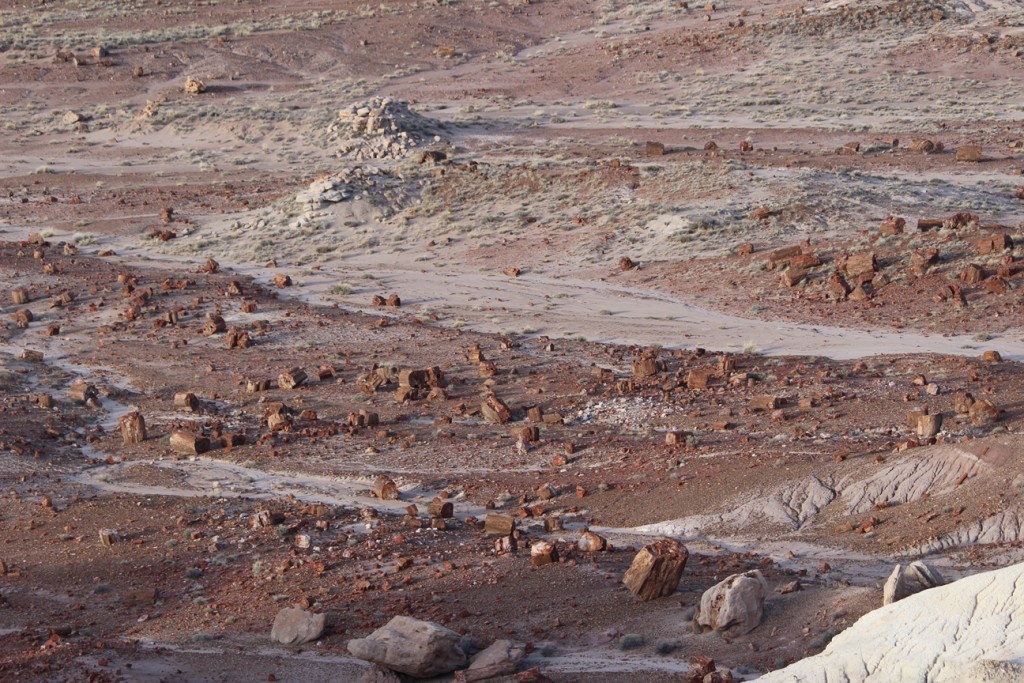 If you take only one walk, make it the .75 mile trail in the Crystal Forest. Here you’ll get a close-up view of logs that have turned to quartz crystals in a plethora of colors. Although crystals are naturally clear, minerals turn them various hues.
If you take only one walk, make it the .75 mile trail in the Crystal Forest. Here you’ll get a close-up view of logs that have turned to quartz crystals in a plethora of colors. Although crystals are naturally clear, minerals turn them various hues.
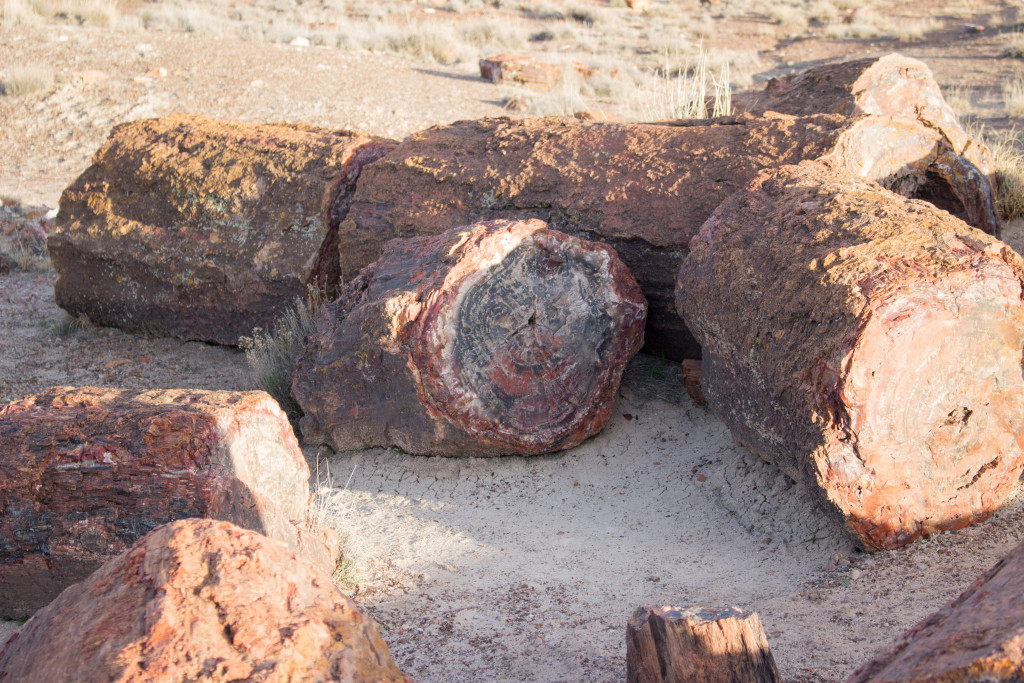
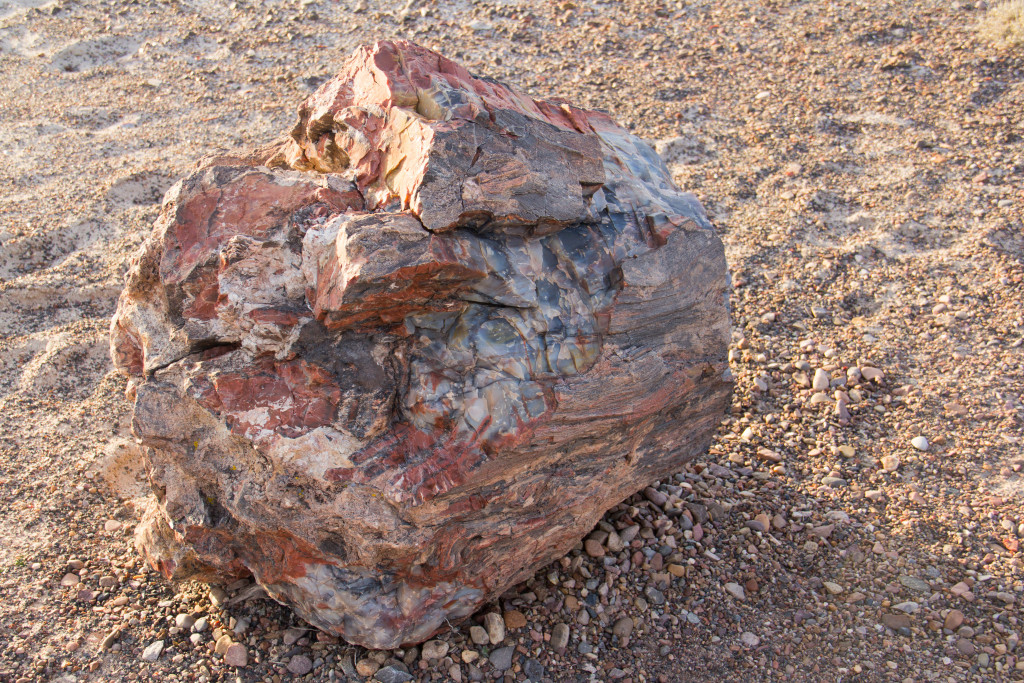 Unfortunately, we didn’t allow enough time to visit the Rainbow Forest Museum, which closes earlier than the park, so we missed seeing the paleontological exhibits. However, as dusk was approaching, we were still able to walk some of the Giant Logs Trail and see “Old Faithful,” the park’s largest log, which measures over nine feet at the bottom.
Unfortunately, we didn’t allow enough time to visit the Rainbow Forest Museum, which closes earlier than the park, so we missed seeing the paleontological exhibits. However, as dusk was approaching, we were still able to walk some of the Giant Logs Trail and see “Old Faithful,” the park’s largest log, which measures over nine feet at the bottom.
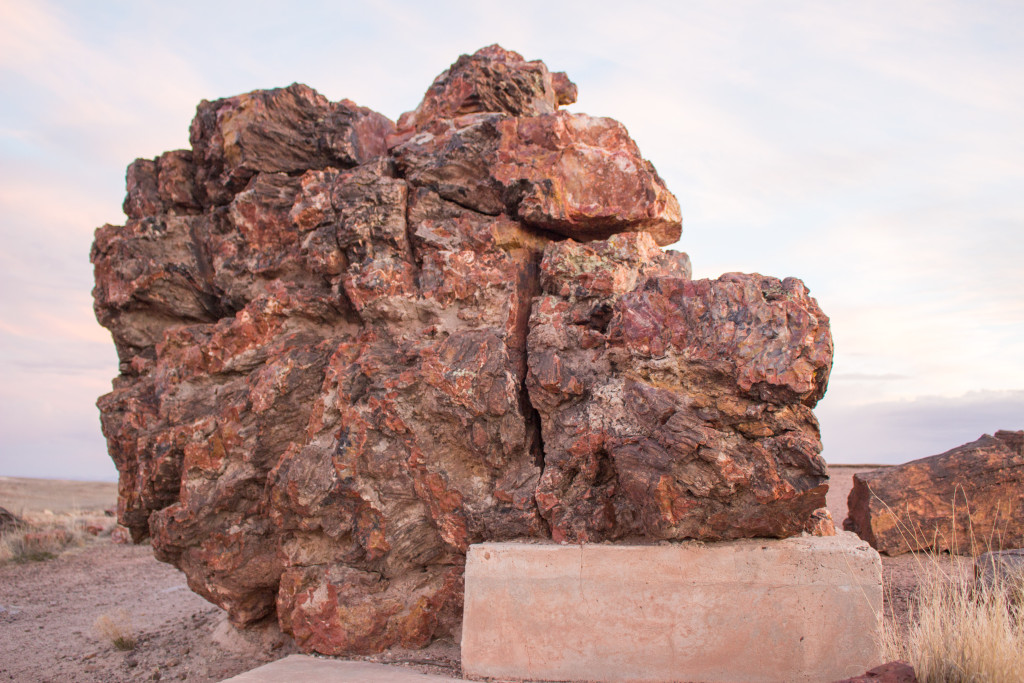 To get to the Petrified Forest National Park as you’re headed westbound, take I-40 Exit 311 to the north entrance. If you’re heading eastbound, take I-40 Exit 284 to U.S. Route 180 east from Holbrook to the south entrance. Check the web site for information on fees, hours and other details.
To get to the Petrified Forest National Park as you’re headed westbound, take I-40 Exit 311 to the north entrance. If you’re heading eastbound, take I-40 Exit 284 to U.S. Route 180 east from Holbrook to the south entrance. Check the web site for information on fees, hours and other details.
Photos by Skip Reed and Connie Reed
Thank you for reading Midwest Wanderer. Don’t miss a post. Enter your e-mail address below and click Subscribe to be notified whenever I publish another post. Subscription is FREE. After subscribing, be sure to click the link when you get the e-mail asking you to confirm. – Connie
